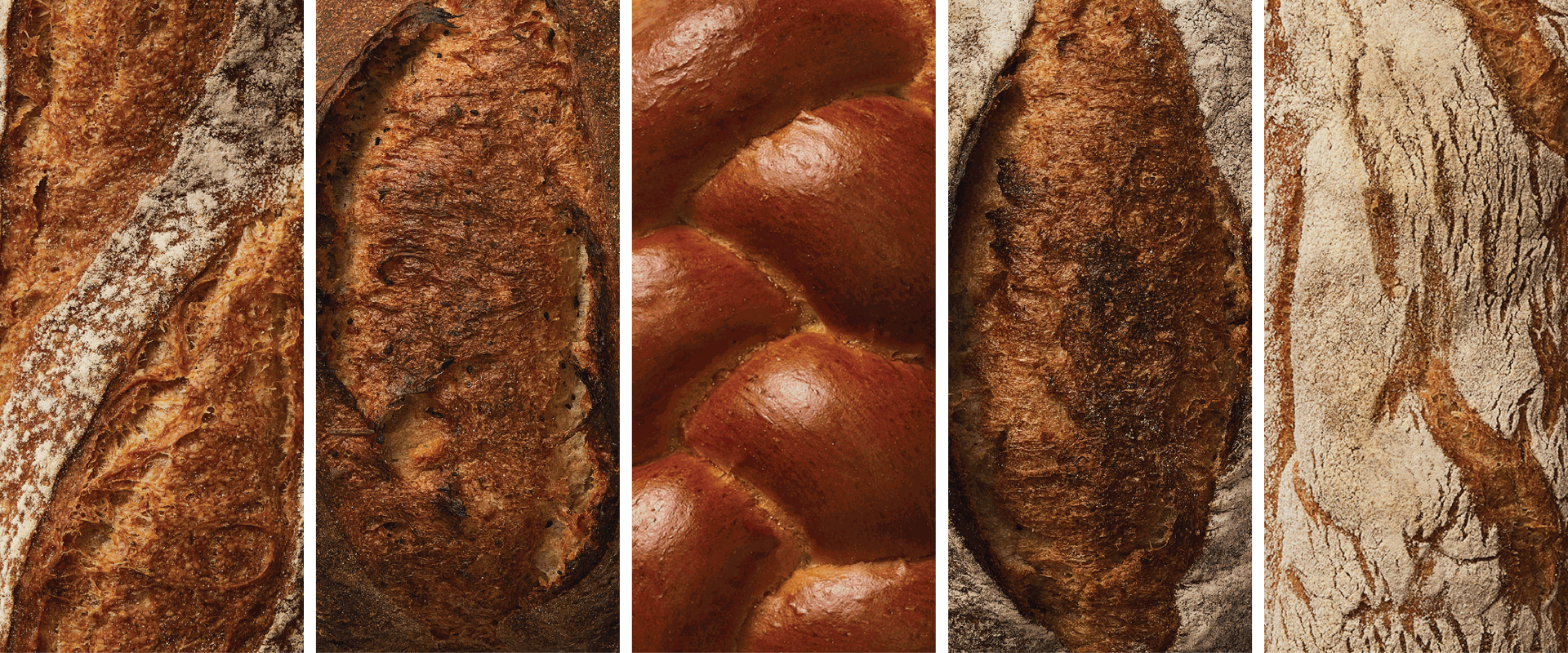With change in the air and spring on the horizon, we are making some timely refreshes to some of our breads, making them more flavourful, nutritious and sustainable than ever before.
Bread recipes are funny things. How can a thing that requires precision and accuracy have such a relentless tendency to change and adapt? As methods and instructions are passed down through generations, recipes evolve to reflect not only bakers’ whims but also the world at large: the availability of ingredients, culinary technology, changing tastes and cultural shifts.
The truth is that, as bakers, we are engaged in the world around us and respond to what we see through the bread we bake. Today, when our care of the natural world is more important than ever, improving a recipe is less about tweaking ratios and more about engaging directly with where ingredients come from, how they are grown and what impact – on people and nature – they have.
That’s why we are pleased to share the beginning of a project we are calling The Way We Bake, an initiative that will see us reconsider our bread formulas from the perspective of nutrition, flavour and sustainability over the next two years. We know that baking the best bread we can in 2024 and beyond requires us to source ingredients that support the shift away from exploitive farming, and which can feed humans for generations to come. Here’s how we’re getting there…
Four Things We’re Doing To Bake Better Bread
1. Using more flavourful grain varieties
We are upping the amount of grains used in our breads to include varieties of Emmer, Spelt, Rye and Barley. For you, this means bread that has richer, more complex flavours, all with the texture and mouthfeel you know and love.
2. Adding gut-friendly wholegrain
Retaining and using everything the plant has put into its grain comes with many benefits, from avoiding waste to bread that is more nutritionally complete. But with 90 per cent of us not getting enough fibre, perhaps one of the main advantages of wholegrain food is its high roughage content, which improves gut health and aids digestion.
3. Sourcing grain from regenerative farms
As a proportion of the wheat used in our recipes comes from farmers practising regenerative agriculture, we are supporting farming methods that promote biodiversity and soil health, making the land stronger and more fertile for generations to come. We will be increasing this over the coming years.
4. Enriching our starters
There is much to say about how improving the conditions of fermentation results in better bread (see our recent piece with our master baker for more), but, in short, our fermented starters – the foundations of every loaf we bake – thrive when fed varied and robust grains. A healthy starter is the key to maximising the full potential of flour, unlocking its flavour and available nutrients.
Want to try our more flavourful, nutritious and sustainable loaves?
The Way We Bake project will extend to everything that comes out of our ovens and we’re starting with some of our classic loaves.
GAIL’s Sourdough
Formerly known as our White Sourdough, our signature everyday loaf is more flavourful and nutritious than ever before
Potato & Rosemary Sourdough
Aromatic chopped rosemary is the perfect foil for scattered flecks of potato, baked whole and mixed into the dough.
Wasteless Sourdough
Our creation to reduce food waste will now benefit from grains farmed with nature and soil in mind
Baguette
A golden brown, blistered crust conceals a crumb structure speckled with flavourful wholegrains
Ciabatta
A hand-shaped loaf that has a rustic, craggy crust, but a crumb texture that has all the hallmarks of this Italian classic
And so the never-ending evolution of our recipes marches on, shifting and changing like the world around us. There might not be a final destination in our journey to bake the best we can, but we can promise one thing: great bread along the way.
